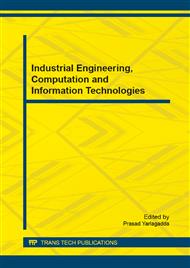p.864
p.869
p.874
p.879
p.891
p.895
p.902
p.907
p.911
A General Model of Contention-Tolerant Crossbar Switch
Abstract:
Recently, we proposed an innovative switch architecture called Contention-Tolerant Crossbar (CTC) switch. It is able to tolerate conflicts in switch fabric. The schedulers of CTC are distributed in inputs and operate independently and in parallel, which releases the central controller and cooperative arbiters, and largely reduces the hardware complexity. In this paper, we discuss a general model by discussing a CTC structure with X inputs and Y outputs called (X, Y)-CTC Structure. And a queueing network model is developed for analyzing the throughput of this general structure. Since it has the main characteristics of CTC, it can be seen as the basis of modularity study of Contention-Tolerant Switches.
Info:
Periodical:
Pages:
891-894
Citation:
Online since:
December 2014
Authors:
Keywords:
Price:
Сopyright:
© 2015 Trans Tech Publications Ltd. All Rights Reserved
Share:
Citation:


